Abstract
In today's society education and not just information is a very important link in individual definition. Thus, education implies accumulation, storage, and later a rendering, sometimes filtered, sometimes not, of perceived knowledge as novel to the individual. By transferring the ones mentioned in the motor area of the individual, his education (implicitly self-education) is allowed and conditioned by several factors including: the desire to evolve (in terms of body expressiveness and not only), individual will, personal perception etc. Participation and involvement in an educational process creates the premises of a correct, professional approach, supported by capitalizing and highlighting the results obtained in the medium and long term. Individual evolution occurs only when the individual accumulates new information, stores them, and then applies them in different contexts, determining new valences and modeling verbal and physical (motoric) behavior. Body expressiveness is a result of the development of various motor activities, activities that find their implications in all executions of elements and procedures specific to different types of sports. Educating the individual during the years of studies on practicing a sport has as a final goal the formation and/or improvement of the persson/student's abilities, which will have positive effects on the general state of health of the body, on the behavior, the psycho-social state, etc.
Keywords: Sports educationhealthintegration into society
Introduction
Education is a process with a specific purpose, self-education (starting from the will of the individual), assuming the volitional involvement - in an act of individual will - of the individual in order to satisfy his desire to become better. "Body expressiveness is a general manifestation or at a particular moment, of the individual's informational package under the aesthetic aspect of the physical and psycho-intellectual-emotional structure. All these components, theoretically and practically assimilated by an educational or self-educative process, rebuild and redefine the individual, generating a progression in his attitude and behaviour, as well as a significant improvement in his professional activities" (Plăstoi, 2018, p.7).
Body expressiveness is an acquired, emotional attribute, the manifestation of which involves sensitivity doubled by thought. That's why creative activity occupies a central place in body expression and is not based on foreign factors of human emotion. The objective of creation in bodily expression has a formative role on individuals and ”the basic features are manifested in their most natural, spontaneous and glamorous forms”(Curelar, 2017, p. 52). The entire educational process of practicing physical exercise is reflected on the whole human body in different ways such as: intellectual, psycho-social, affective, motor skills etc.
Problem Statement
Although "the level of knowledge required in the sport performance domain must be continuously updated according to the underlying requirements to achieve outstanding sporting outcomes that should be one of the objectives of the sporting training process" (Mihai, 2011, p.122), the education received through sport by students during the years of study, offers the possibility of training and bodybuilding as individuals, as well as the awareness of the benefits of body posture and attitude, of the cognitive-volitional-emotional qualities, of the desire to practice physical activities in their leisure time, etc.
Research Questions
The aforementioned aspects strengthen the fact that the valences received through the sport education of the individuals / students create the premises of the accumulation of a motor and vocational baggage that is useful for an excellent socialization and correct physical manifestations. Assimilation of theoretical and practical notions creates new brain matrices and forms stereotypes such as motor skills” Cognition is not independent of the brain and body, perception and action, but there is a relationship of interdependence between them; intelligent behaviour is the result of symbols processing operations at a given brain and body in a certain time and physical and social space. So, we can consider cognition not only being "incorporated/ contained in the body" (embodied) but contained (embedded) into a more complex system of the body located and „in service” in certain space and time” (Voicu & Chera-Ferrario, 2016).
Purpose of the Study
Highlighting the skills acquired during the sport education of individuals in different ways - expressiveness and attitude, maintaining an optimal state of health, activities at the work place, integration into society etc.
Research Methods
The initial and final evaluations of the practical tests included the students' support of the Matorin test, 4 samples for muscle strength and a complex exercise for coordination, suppleness and balance by the students of ”Constantin Brancusi” University, figure
Findings
The present study was carried out on a group of 120 persons/students enrolled in different specializations within two universities: "Constantin Brâncuşi" University of Târgu-Jiu, 60 students and "Spiru Haret" University, Bucharest, 60 students, during a university semester. The subjects involved in the study were enrolled in the first year, the academic year 2017-2018, the evaluation dates being recorded during the 14 weeks of the first semester, the students taking part in a physical education lesson weekly. Applies the Matorin test by the students of two universities:
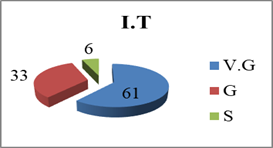
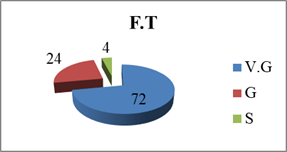
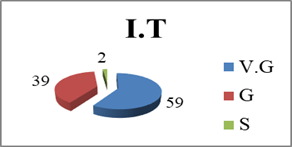
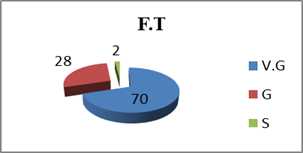
Concerning the exercise for coordination, equilibrium and suppleness, composed of forward wave, pirouette passé, closed jump, open jump and fouetté, the correctness of the exercises was appreciated as follows:
- for the body wave the starting position, trunk extension, finishing in the position standing on the tips with the arms extended up;
- for the pirouette passé, the preparation, the 360° on the top of the base leg and the completion in the standing position with the arms extended upwards;
- for the closed jump position of the oscillating foot that must be with the thigh at the horizontal, the angle between the thigh and the thigh is obtuse, and the jump is vertical;
- for the open jump the foot that must be raised stretched back as close as possible to the horizontal, the deviation being vertical;
- for fouetté, the spin should be 90 °, the completion being in arabesque position.
The results obtained by students following gymnastics exercise for coordination, equilibrium and suppleness, composed of forward wave, pirouette passé, closed jump, open jump and fouetté are graphically interpreted in the figure
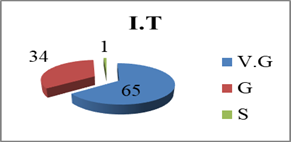
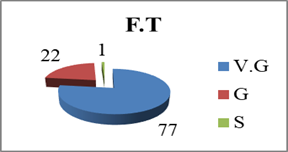
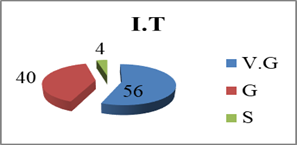
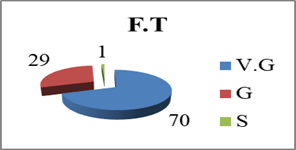
The students also responded to 3 questionnaires on: mood or fatigue, the psycho-social level of individual integration into society, and the desire to practice a sport in their leisure time.
The results obtained by students of ”Constantin Brâncuşi” University are graphically interpreted in the next two figures: for initial testing, figure
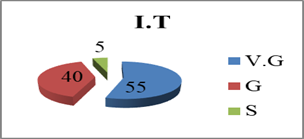
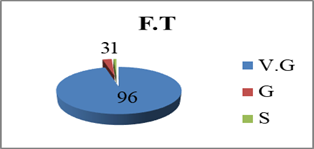
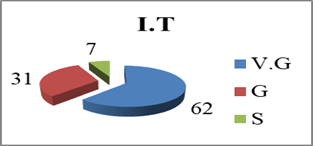
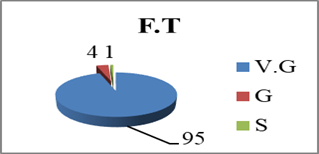
The results at questionnaire regarding of the integration into society by the students of ”Constantin Brâncuși” University are graphically interpreted in figure
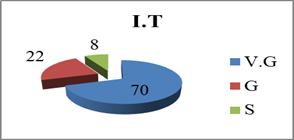
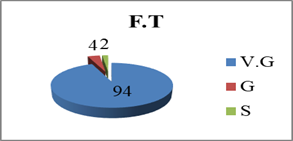
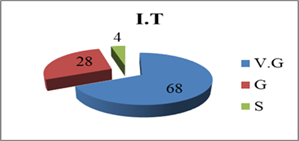
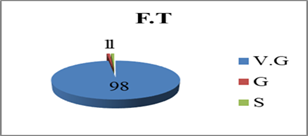
The results obtain by the students of ”Constantin Brâncuși” University at the questionnaire regarding the desire to practice a sport in leisure time are graphically interpreted in figure
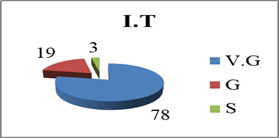
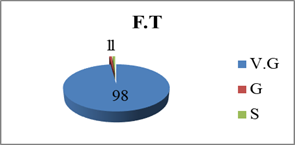
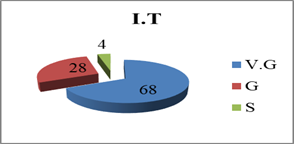
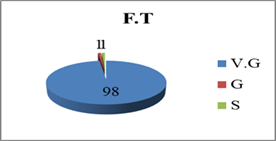
Achieving positive results by the students of the two universities allows us to support the practice of sport has positive valences on the mental and physical state of the individual and they are then more eager to inform themselves about how to practice different sports: ”In sports, we talk about building competence and performance models. Paradigm-art sports will be best highlighted in dramatic arts and active area of related dance, theater, music” (Popescu-Brădiceni & Plăstoi, 2014, p.93). ”The impact of adding a cognitive loading on functional activities such as gait and balance control is inconclusive depending on many factors such as the difficulty of the primary/secondary tasks and subject conditions” (Mihai, 2017, p.128).
Conclusion
Educating the person/student in an organized process that involves the transmission of professionally expressed information will generate a correct body posture, an appropriate attitude, a positive overall state, and last but not least, a beneficial socialization that contributes to the optimization physical capacity of the person/students. Manifestation of the person/student through body expressiveness is an imprint of the theoretical and practical education on it, the manifestation possible only with education or self-education through sport: "we express what we are - we are what we express". The participation of persons/students and their involvement in an educational process made through specific means to the sport field will generate a psycho-social evolution adequate to the integration of the individual into society. Increasing confidence in one's own actions through an educational process involving assimilation of specific theoretical and practical notions so that there is the possibility of some informational accumulations, favours, besides other positive aspects generated and maintaining an optimal state of health of the person/student.
References
- Curelar, M. R. O. (2017). The universe of Ion Creangă's childhood. Annals of the „Constantin Brâncuși” University of Târgu-Jiu, Letter and Social Science Series, 3/2017, 47-52. Retrieved from http://www.utgjiu.ro/revista/lit/pdf/201703/07_Mirabela_Rely_Odette_CURELAR_THE_UNIVERSE_OF_ION_CREANGĂ%27S_CHILDHOOD.pdf
- Mihai, I. (2011, December). Study concerning the kinematic aspects of the step from the male triple jump event. Retrieved from https://www.researchgate.net/publication/284409916_Study_concerning_the_kinematic_aspects_of_the_step_from_the_male_triple_jump_event
- Mihai, I. (2017). Progressive neuromuscular control improvement by using extrinsic feedback as learning tool, in swimming. Proceedings on Humanities and Social Sciences, 4(8), 126-135. DOI: 10.18844/prosoc.v4i8.3023
- Plăstoi, C. D. (2018). Corporal expression as a form of manifesting education of the individual. Annals of the „Constantin Brâncuși” University of Târgu-Jiu, 1, 145-148. Retrieved from http://www.utgjiu.ro/revista/lit/pdf/2018-01/21_Camelia%20PLĂSTOI%20-%20CORPORAL%20EXPRESSION%20AS%20A%20FORM%20OF%20MANIFESTING%20EDUCATION%20OF%20THE%20INDIVIDUAL.pdf
- Popescu-Brădiceni, I. & Plăstoi C. D. (2014). Synchronization and the performance sports model subjected to the philosophical interference. In I. Boldea (Ed.) Globalization and Intercultural Dialogue: Multidisciplinary Perspectives - Communication and Public Relations (pp. 93-100). Târgu-Mureș: Arhipelag XXI. Retrieved from https://s3.amazonaws.com/academia.edu.documents/36935224/Texte_Communication-GIDNI.pdf?AWSAccessKeyId=AKIAIWOWYYGZ2Y53UL3A&Expires=1552471348&Signature=98z%2BO6iHQspkNAhbUdKPVTVJkXo%3D&response-content-disposition=inline%3B%20filename%3DIulian_Boldea_Editor_Globalization_and_I.pdf#page=93
- Voicu, C., & Chera-Ferrario, B. (2016). Effects of motor stimulation programs on children with down syndrome development. The European Proceedings of Social & Behavioural Sciences, Future Acacademy, XXIII, 1282-1288. DOI:
Copyright information

This work is licensed under a Creative Commons Attribution-NonCommercial-NoDerivatives 4.0 International License.
About this article
Publication Date
15 August 2019
Article Doi
eBook ISBN
978-1-80296-066-2
Publisher
Future Academy
Volume
67
Print ISBN (optional)
-
Edition Number
1st Edition
Pages
1-2235
Subjects
Educational strategies,teacher education, educational policy, organization of education, management of education, teacher training
Cite this article as:
Plăstoi*, C., & Buțu, I. (2019). Sports Education And Its Impact On The Health And Integration Into Society. In E. Soare, & C. Langa (Eds.), Education Facing Contemporary World Issues, vol 67. European Proceedings of Social and Behavioural Sciences (pp. 1350-1358). Future Academy. https://doi.org/10.15405/epsbs.2019.08.03.166
